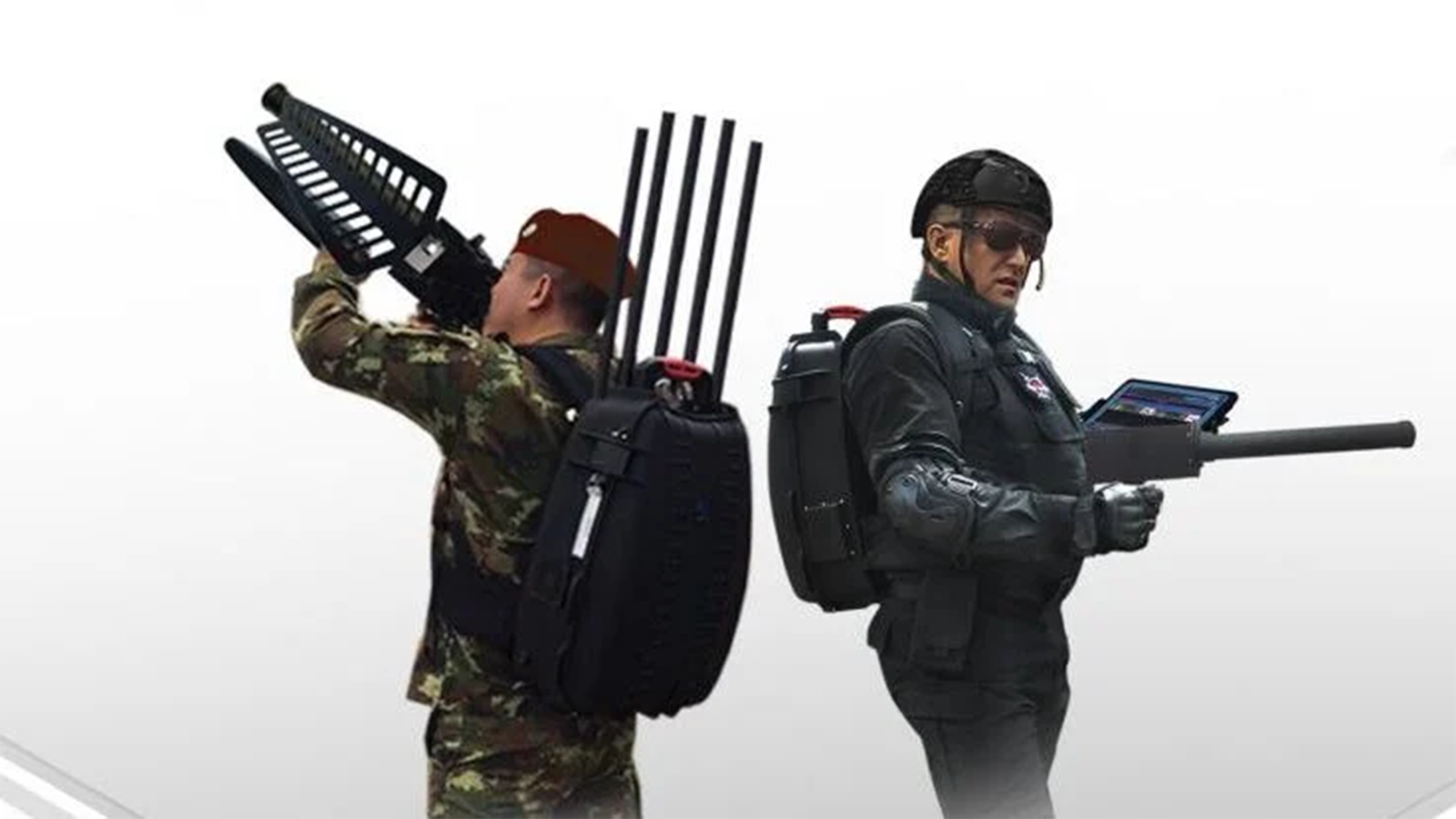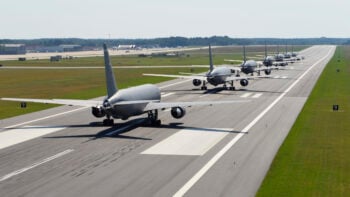
Promotional images from TRD Singapore show off their anti-drone solutions. (TRD)
BEIRUT: With the increased number of drone attacks in the Gulf, firms producing counter-drone solutions are searching for a strategy to penetrate the rich markets of Saudi Arabia and the United Arab Emirates.
TRD Singapore is one such company, and is now looking to find a local Emirati firm to create a joint venture to coproduce its Orion-10 solution in the UAE. According to the company, the system has been proven and operational in over 16 countries, including the UAE.
“We are currently looking for a local partner to collaborate on the local production and technology transfer. We have a lot potential partners who generated interest in our systems since the Intersec Expo in Jan 2022, and now from World Defense Show 2022, so we are in the process of evaluating and hope to work with someone soon on this,” Sam Ong, CEO and Founder of TRD Singapore, told Breaking Defense.
The firm, which has traditionally focused on law enforcement technologies, is seeking to expand into the defense market “by extending and integrating advanced soft and hard kill solutions into our systems, e.g. spoofing, take control, laser and drone-on-drone,” Ong said.
TRD is hardly alone in its interest in the UAE as a counter-drone customer. In recent editions of regional defense shows such as IDEX, the Dubai Airshow and UMEX, there has been a noticeable increase in counter-drone systems exhibited, as the drone threat has percolated in the Gulf.
Israeli firms, basking in the normalized relations between the UAE, Bahrain and Israel following the Abraham Accords, have been particularly forceful in their marketing at these shows. And they have seen early successes with joint partnerships: In March 2022, Edge, UAE’s conglomerate announced signing a memorandum of understanding with Israel Aerospace Industries to produce fully autonomous counter-UAV system tailored for the Emirati market.
UAE Vision 2030 is a long-term plan for the transformation of the emirate’s economy, including a reduced reliance on the oil sector as a source of economic activity over time and a greater focus on knowledge-based industries in the future. This vision calls for technology transfer of 50% of imported systems to boost local production, which means most international companies are looking for a local partner for a joint venture to coproduce their systems and export their products.
“UAE is currently looking for anti-drone solutions quickly and are going to a number of different providers for this problem. There is always the possibility that the Houthis will resume their attacks and it’s important to mitigate that threat with new technology solutions,” Theodore Karasik, senior adviser at the US-based geopolitical consultancy Gulf State Analytics, told Breaking Defense.
RELATED: Iran’s Drones Are Transforming The Middle East: Book Excerpt
He added that given that drones are ubiquitous in the current environment due to increasing quality and ability to deliver a payload, this threat is here yesterday.
“Contending with the development of drones is now a priority action item. [The] UAE approach is always to sample all parts of the market in order to find what fits best needs immediately or down the line. Its approach is unique and important to understand,” Karasik commented.
Into that situation steps TRD. Ong stated that the company has already sold 10 manpack drone jammers to an UAE government end-user in February, but didn’t specify which government entity that might be. The Origion-10, according to Ong, comes with 6-band directional (1km) and omni jamming (500m radius), and is a “quick and ready solution to equip our customer with an immediate capability against drone threats.”
The executive said that while the company wants to co-produce its manpack jammers first, the goal is to eventually also co-produce the Orion-H and H+ anti-drone guns as well. “Following which, when there are further requirements, we will work on the bigger and more complicated systems with our partners, where at the start, we will send engineers to train the local staff to build up the capabilities,” he added.
The United Arab Emirates has encountered a number of drone attacks in recent years, as the threat of Iranian-made unmanned systems have percolated throughout the region.
There were two notable instances this year: On January 18, Houthi rebels launched drone strikes near an Abu Dhabi airport that killed three people. And on Feb 2, the UAE MoD announced the interception and destruction, away from populated areas, of three hostile drones that penetrated its airspace.
Saudi Arabia has also been the target of drone attacks from Houthi rebel forces. In February, Saudi air defenses intercepted and destroyed a drone close to the kingdom’s southern border with Yemen, and in March, a Saudi Aramco refinery in the capital Riyadh was attacked by drones, with the Houthis claiming responsibility.
Ong said that TRD hopes to export to the Saudi military as well; getting the system into use with the UAE forces would seem to be an easy way to showcase the capabilities of TRD’s systems.
Army inching towards late FY25 Chinook Block II full-rate production contract
Boeing recently announced the Block II helo’s first maiden flight and plans to deliver the first production aircraft to the service in the coming weeks.


























